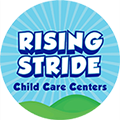With the abundance of information out there, it can seem like there are no clear answers about how to teach a child how to read. Discussions over reading models can get heated and be hard to follow. As a busy parent, you may not have time to wade through all of the conflicting opinions.
Kids with strong reading skills do better in school, and reading unlocks the rest of the learning world. Once they can read, kids can turn to books (and the internet) to find new passions, experience unforgettable stories, explore new places, and engage with the world in new ways.
We’ve rounded up ten effective tips for teaching kids to read, to help you boost your child’s reading skills and confidence.
Why is Teaching Children to Read Important?
Reading is a fundamental skill that plays a significant role in your child’s cognitive, social, and emotional development. By mastering reading, your little one will gain access to a world of knowledge, imagination, and creativity. But the benefits don’t stop there!
Cognitive Development Benefits
Developing strong reading skills enhances your child’s overall cognitive development. Reading helps improve memory, vocabulary, and critical thinking abilities. It also fosters a sense of curiosity as children learn about different topics and explore various perspectives through the stories they read.
Social and Emotional Development
Reading doesn’t just boost your child’s brain power; it also helps develop their social and emotional skills. Through reading, children can learn empathy and understanding by experiencing the emotions of different characters. Reading also exposes children to diverse cultures, backgrounds, and experiences, promoting open-mindedness and tolerance.
Academic Success and Future Opportunities
Studies have shown that early reading proficiency strongly predicts academic success. Children who develop strong reading skills at an early age are more likely to perform well in school, excel in various subjects, and enjoy greater opportunities in their future careers. Teaching your child to read supports their growth and sets them up for a bright future.
Teaching Children to Read: Simple Steps for Parents
With the right approach and a few simple steps, you can teach your children how to read and encourage excitement over reading. Here are some essential techniques to help guide your child on their reading journey.
Phonics
Phonics helps children understand the relationship between letters and their corresponding sounds, which is crucial for decoding words. Try to use engaging activities like letter-sound matching games, songs, and flashcards to help your child practice phonics. Another easy way to incorporate phonics is to encourage them to sound out words in their favorite books.
Familiar Words
Start with relevant words to your child’s life and interests to make learning more engaging and relatable. You can play word-based games like “I Spy” or create personalized flashcards with pictures of familiar objects or family members to help your child recognize and read these words
One Word at a Time
Teach your child to pay attention to each word in a sentence, breaking down and sounding out unfamiliar words. Help your child understand word structure by identifying prefixes, suffixes, and root words or using the “chunking” method to break words into smaller, more manageable parts.
Ample Exposure and Lots of Repetition
Repeated exposure to words and texts helps to reinforce reading skills and improve reading fluency. Try to create a consistent reading schedule, read aloud together, and encourage your child to practice reading independently.
Illustrations and Large Print
Illustrations can help children understand the meaning of words and provide context for the story. Look for books with large print, clear illustrations, and simple sentences that match your child’s reading level and interests.
High-Frequency Vocabulary
High-frequency words make up a large portion of written text, making them crucial for reading fluency. Examples include, “it”, “as”, “the” and “with.” You can use flashcards, books, games, and interactive activities to help your child easily recognize and read high-frequency words.

